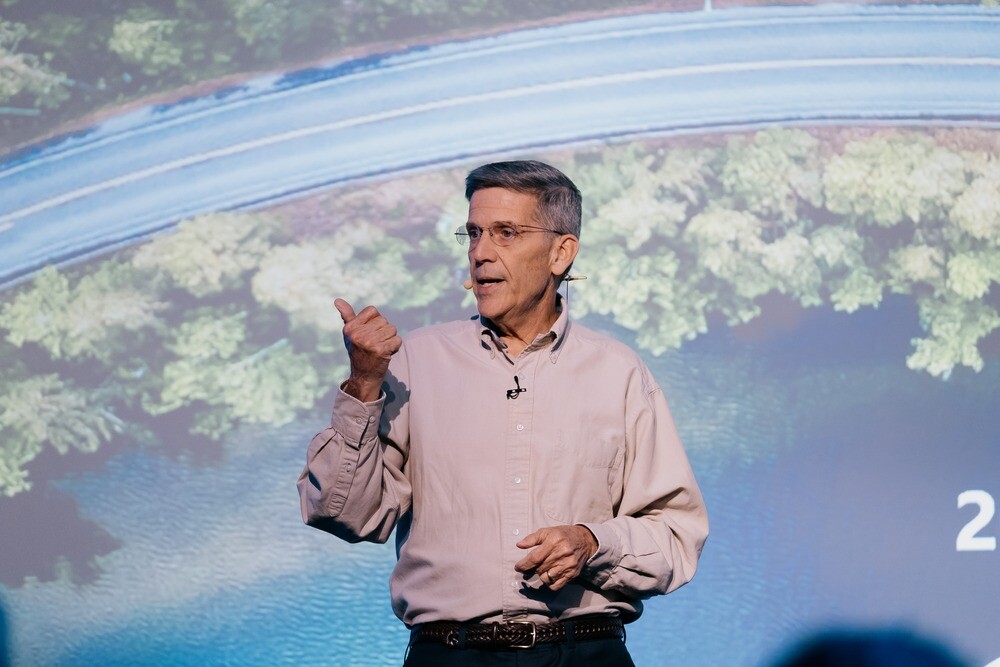Earlier this year, infrastructure engineering software company Bentley Systems announced that its Chief Technology Officer and co-founder, Keith Bentley, would be retiring in 2023, transitioning to an advisory role before his full retirement. Keith, along with his brother Barry, founded the company in 1984 and has grown it into a leader in the infrastructure space.
Over his nearly four decades in the industry, Bentley has seen a tremendous amount of change and growth, not only within his own company but in the infrastructure space as a whole. Recently, Geo Week News spoke with Mr. Bentley in a wide-ranging conversation about his time in the industry, the changes he has observed, what he sees coming in the future, and what he’d say to young people thinking about getting started in the space.
The interview below has been lightly edited for clarity and length.
Matt Collins: Let’s start at the beginning. Can you give some background on your early career, how you got into this field, and what led to the founding of Bentley?
Keith Bentley: I was in college in the '70s when computers were relatively new, and I decided I would become an electrical engineering major, which I enjoyed. However, in electrical engineering, at least at that period of time, there were two specialties you could take: analog electronics or computer electronics, and that was a relatively new phase. So I got into the latter, spending most of my undergraduate days writing software, and I pretty quickly determined that I was both good at it and interested in it.
When I graduated with a master's degree in electrical engineering, I took a job with the DuPont Company and they asked what I’d like to do. I told them I liked software, and they said, Great, we have this department and we're looking for software people. It's called the CAD department. I said, Great, what does it stand for? And they said, That's Computer Aided Design. I took my first job out of college working for DuPont, writing software for a system that they had developed internally to create drawings, essentially, and I enjoyed it.
My brother Barry was getting his PhD in chemical engineering at CalTech, and he started a software company. Somehow he convinced me to quit my good job at DuPont and move to California. Meanwhile, the software I developed for DuPont did some aspects of drafting that no one else at DuPont were able to use. I had gone out to California and started writing software for chemistry, and DuPont contacted me and asked if I could add some enhancements to the software I wrote during my time with them.
I negotiated the deal with DuPont to get the rights to sell that software in exchange for supporting them forever. That was the beginning. Now I had this software that I had written that did CAD, and when I was working full time for Barry's company writing software for chemistry, I started Bentley Systems. For a while I was full-time employed at another company and working only part-time for Bentley Systems. But quickly, we discovered that chemistry software, while a great technical challenge, was not a great way to make a living. We determined that the CAD world was something we could be successful at.
In 1984, we started Bentley Systems, and we're talking even before the advent of the personal computer. Bentley's first product actually ran on what at the time was known as a mini computer, which was a fairly major investment to have the computer to generate pieces of paper. When the personal computer came out, about 30 companies were started at the very beginning to do CAD, and Bentley was only one of many.
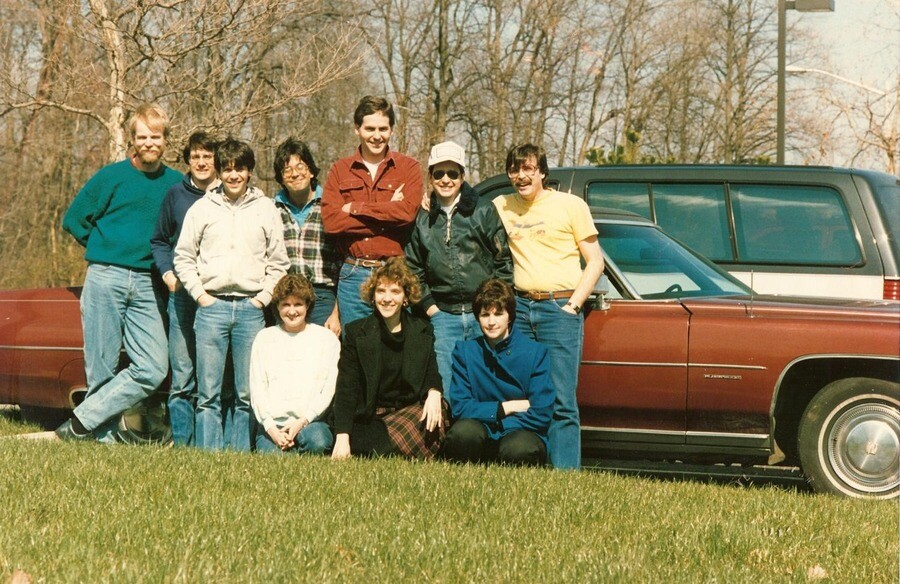
When you were first starting Bentley, what were the problems you were trying to solve, and how have those evolved over the years?
In the very beginnings of Bentley Systems, the mission was CAD. So the output of the software was a physical piece of paper, and then there were mechanical devices that would turn computer-generated concepts into pieces of paper, but nothing else we did mattered unless the drawings on the page looked right. That was our main initial mission. The users of our software at the time were technologists, not engineers, per se. Many of them started as drafts people and moved over to computer operators. The image of what appeared on the screen had to look like what was being created manually on pieces of paper. That was our entire mission.
Then people started realizing you could do a lot more with the computer, and of course it attracted the engineers who were actually designing the things. Engineers used to tell draft people what they wanted, and instead of telling a drafter they actually started using the computer, and it became clear that instead of just documenting a design process, we can create tools to help with the design process. Engineers started using engineering concepts in the CAD, and then it became computer aided design. That was phase two.
Then over another decade or so, people started realizing that if you're going to create a 3D model, why don't you add in additional information, which generally became known as BIM, and those information models are way more than the output on a piece of paper. When our software started evolving to become more capable to be used by different audiences and to have a different output, the level of sophistication became tremendously more valuable. So the industry has changed dramatically from drafting to design to information models, and that's where we were probably 10 years ago.
The mission is way different now than it once was, but there's been a constant continuum. One of the things that has been a challenge - but also an advantage- is to try to make it so that we continually improve, do everything we used to do, and then some more, and then keep it so that you don't have to throw everything away and start over again. One of the virtues that Bentley has is you can take a file that was generated 25 years ago and still bring it up on the current version of our products. We've added a lot of new capabilities, but the way to do that is to continually improve rather than reinvent.
I want to think about the industry as a whole for a little bit, because AEC obviously has a reputation of being maybe a little averse to this technology. What do you think about that reputation?
I think the idea that people who work on buildings, roads, railway systems, transportation systems, utility networks, communications networks, are laggards from a technology perspective, I don't think it's necessarily true. I think people do recognize the old ways aren't always the best ways. But as a whole, the industry is very risk-averse, which isn't a bad thing; not every new idea is going to be a good idea. It's definitely true that all improvement comes from change, but not all change is improvement. So yes, we have a risk-averse constituency, but nothing about the way that business was conducted 30 years ago is the same today. I think we take a bit of a black eye that we don't deserve for being technology luddites. I don't think that's true.
I would agree with that, but I am curious, have those attitudes changed over the years? Have you had to change the ways you talk about these things? Do you think that change may have happened more quickly in other industries?
One of the biggest limiting factors about how quickly anybody could change even if they wanted to is the way contracts are. Inevitably every project of a certain scale will have problems, and when there are problems, we try to ascribe blame. That’s what contracts are for. Even if you wanted to, you couldn't just say, Ignore the contract. Let's just do it a different way. And in the case of many of the largest of the public infrastructure projects, the contracts always say, Well go back to the drawings. And it's definitely true drawings are probably the least efficient way to communicate information that we could conceive of, but they're pretty consistent and they're the way we've always done it.
I think one of the things that we must do as an industry to evolve from a workflow wherein information flows inefficiently is to work on the contracting mechanisms and the way to mitigate risk. One of the things that is somewhat paradoxical is that we require drawings because that's how we ascribe fault, but if we didn't have the drawings we would have fewer errors and less fault. In other words, I think we're not necessarily focusing on the right things. That said, I recognize no individual company, not even any individual government agency, can decide all at once, Okay, the next project we're going to do completely differently.
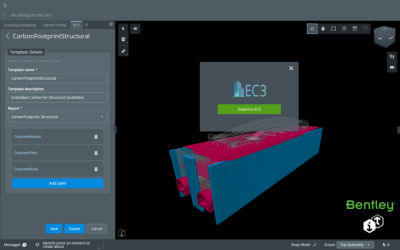
But there is hope, and I actually believe there's significant progress being made on the information flow. One of the reasons for that is the concept of a digital twin, which is not new in many other industries. I think people are starting to take a step back and re-examine why we do things the way we do them. Even over the last few years, I think that evolution has begun. BIM was the beginning of that, but I do think now that many organizations are starting to recognize the workflow should be based around the digital twin rather than construction documentation and contracts.
I have great hope, and we're early but well into the beginnings. I'd say we're 20% of the way into an industry transformation. I think that's pretty good; 80% in front of us, but as we look at how long it's going to take that other 80% to get done, I think the pace of change will increase. I'm optimistic. I'm exiting my career here as we're facing the greatest opportunity in front of us rather than behind us for process improvement.
Well you just answered my follow-up. I was going to ask how far along you think we are on that path.
It's a rough number, but I wouldn't put it any less than that because we've made huge amounts of progress. I'm familiar with Bentley accounts, but I bet this will be true of projects the world around. People do recognize information is key. It's not about necessarily just documenting facts. It's about modeling the concepts, and when you model the concepts, it opens up many new opportunities.
And of course, nobody could be sitting here in 2023 and not recognize that AI is going to change everything about the information system. No conversation about technology is ever complete without adding the ChatGPT aspect of it. In the case of ChatGPT it's about words, but when we talk about an infrastructure model, it's about all of the physical properties, and logical properties, and the physics of infrastructure assets. AI is going to change that way more than the 40 years that I've been around.
When I say we're 20% in, I don't think the next 80% is going to take anywhere near as long. I think we're going to be in a world looking back a few years from now thinking My gosh, remember 2023 when we didn't have a ChatGPT for infrastructure? It’s going to be really quick. I wish I was a younger man, because I think it's going to be a fun time. Infrastructure in general, I think it's a great career. I'm biased but I think there's just great reward in improving something that everybody uses. Technology for infrastructure is going to change way, way faster than the pace of change in the past.
It took us a really long time to get past all of the technology hurdles, but nowadays, every worksite has dozens and dozens of mobile devices on it - sensors, drones, every bulldozer. There's computers everywhere, and when we connect them all together then we have a reliable model, and now we add in some AI. Think about preparing for disasters. How would we improve the way that infrastructure reacts in the face of unexpected consequences? We can model many, many things, but an AI tool to do that is going to be way more efficient. We'll be able to react more quickly, we'll be able to mitigate things, we'll be able to make sure that the problems which can be solved are solved before they're real.
You were talking about digital twins, and I want to talk about the iTwin Platform. When it was first being developed, what were you expecting? And has that stayed within your expectations, or has it developed in ways you maybe weren’t expecting?
The one thing I will say about iTwin that I believe is its greatest differentiator - I'm no expert in everyone else's technology so I'll only talk about my own - is that it’s a platform. We purposely designed it to be capable of solving problems that we didn't have in mind when we created it. As a platform, you can provide additional code to make it work in different ways. That's what iTwin was from the beginning. One of the things that I have been most, both surprised at and proud of, is the ways people have taken that platform and applied it to problems I didn't really frankly think were relevant.
When you talk about a digital twin, there's just a lot of dimensions on that. Everyone's digital twin is slightly different. You don't buy your digital twin, you build your digital twin. Bentley isn't the vendor to solve everyone's problems. We couldn't if we wanted to. People have taken the code we've written and used it for things I didn't really expect it would be any good at. Not that it's the right tool for everything, but people are pretty creative and pretty resourceful. When you give them a good enough tool, they'll bend it in ways that make it impressive.
I do think iTwin is going to be Bentley's future for sure, and I do think - and I won't single out iTwin as being unique - the concept of a flexible platform that you can customize and extend and, in the case of iTwin because it's open source, you can just cleave off parts of it and use it to solve other problems, it’s the future. It's certainly way different than all of the technology we created previous to iTwin. It's a great foundation upon which we and others can build.
Do you have anything that comes immediately to mind in terms of those unique uses?
We did an acquisition a few years ago of a company called Seequent, and they model things under the ground. Bentley's whole engineering focus has been about how you build things, and when you're talking about the subsurface, you don't build it. You sense it. The tools for modeling subsurface from Seequent, and the tools for modeling the human-created stuff on the surface, obviously they're related to one another. You don't want to build on things where the ground isn't right, and if you are going to drill a mine you need roads to get to it. Connecting those two pieces of the technology universe together had been an import/export problem since the beginning of time. Or you just didn't do it, right?
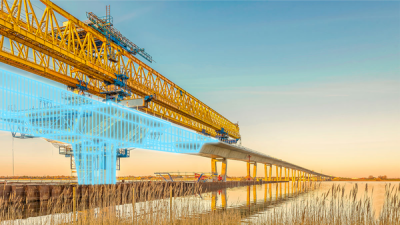
We're using the iTwin platform to fuse our civil models, civil engineering tools, our structural engineering tools, and the subsurface tools to try to make a cohesive solution to organizations that previously would have had two different departments without the purview to take on the problems of the other.
I’d also point to things like road transportation systems. We build roads so that people can get from point A to point B. It isn't just about the civil engineering project, it's about moving people and loads. So modeling the flow of automobiles, trying to run a simulation of the way the roadway system works, that was never our problem. The bigger problem is what happens if you need to close something. How do people get from point A to point B? And so people are using our iTwin platform to be a simulation engine and to be a way for trying to model, not just the road conditions, but the road performance.
So at the beginning of the iTwin project, it didn't seem that those kinds of problems were in scope. We weren't building it for that purpose, but by making it flexible and making it open and making it kind of standardized - we tried to make the iTwin Platform work the way most other cloud-based software works - we're finding there's ways that synapses can get connected. I'm really bullish about Bentley's future through iTwin.
Before we look to the future, I want to look a little bit back throughout your whole time in this industry. What has been the big change, if you had to narrow it down, in this infrastructure space?
It's all about information flow. When you think about software, it starts with: You read something off the disk, the program does something to it, a human interacts with it, and then you change it or learn from it. Information is what computers are designed to do, but in the beginning computers didn't connect so programs didn't connect. The personal computer began before the network began. We used to only be able to solve problems one person at a time, but I think the biggest breaking point was the internet, the advent of the computer that is stored outside of your organization. So companies can connect, computers can connect, and now with the cloud you can even perform actions on computers you don't know.
Information flow changes dramatically when you don't have to try to remember where it's stored. We now can think of information as flowing seamlessly, and when you do that the software that creates the information, manages the information, changes the information, all that stuff, has to work in many different ways. Back in the beginning, we were about disconnected point solutions, and now we're about information flow. With digital twins, information doesn't ever really get born. It only gets modified. It's always there. You don't ever think about starting from a blank screen. There's always some ways that information doesn't need to be recreated from scratch.
The cloud has changed everything about software engineering. You don't think about a desktop as existing. We do lots of work on desktops, but those desktops are always connected. The software program (Zoom) we're using now, I have it installed on my computer, you have it installed on your computer, but it wouldn't do anything unless it were connected. Of course, we can make every one of the tools that have 40 years of history work way better with the cloud. That's not news. That's the last 10 years of our engineering, but I think now, cloud plus AI, it's exciting.
What do you see for the future of Bentley as you transition from your full-time role?
In Bentley's history, at various times we described ourselves as the software engineering. We had tools for engineering. That was our scope. We wanted to build products that automate the process of engineering, or to make an engineer more productive, or to take the output of an engineering process and present it. Now, it's not that we don't care about engineering anymore. We do. Everything we do has layers on top of engineering, but of course, engineers exist in an ecosystem, and our role has expanded to the ecosystem in which the engineers participate.
The concept of infrastructure, there's an infrastructure asset, there's infrastructure projects, there's infrastructure operation. Since the beginning of time, people always drew circles around this lifecycle, but it's never really been true to the extent that any real software could solve that problem.
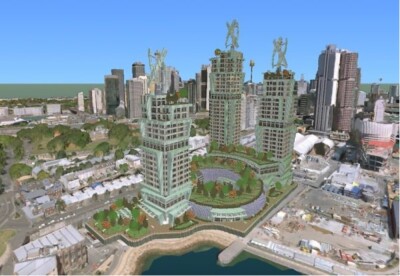
Bentley's mission now is not only about engineering, it's also about analysis and operation, and I think our scope expands tenfold. The types of problem for which our platform and our products and our people aspire to be relevant for is a much broader problem. Of course, when you take a broader problem, there's more competition. There's lots of other people that are also working on those types of things. But I think Bentley's mission is to try to be a facilitator of information exchange.
If I have one wish for the future of Bentley Systems after Keith, I'd say: Be the facilitator, be the platform, be the integration layers, be the tool provider, and let other people take the qualities of that. Create value, and of course we'll make money by adding our own layers of help. There was no roadmap for me when we started Bentley systems. I think [new CTO] Julien Moutte has a good roadmap, way better than the one I would have ever had. I'm a month away from not working full time and am pretty excited about the problem space that people will work on at and with Bentley.
Last question. If you are talking to a college freshman who wants to get into the infrastructure technology space, what do you give them for advice just starting out?
One of the things I try to do is lobby for this career space, so mission accomplished, or at least step one to accomplish if you're talking to someone who's already recognized that infrastructure is a problem worth solving.
My observation is, post-COVID, everyone's working remote. If they're early-career, there's a mental image of a career path involving changing jobs, changing companies, even missions within a single company. And when I look back on when I started this, people worked for the same company for a very long while. My advice to the freshman is don't think that you must jump companies to be successful. I'm not saying there's anything wrong with it if you're working for a company you don't like what they do, or you don't like your job, or you don't like your boss. I just would say you don't have to change organizations just to have a successful career.
I see some people who are young in their Bentley career, and since they virtually never met anyone else from Bentley Systems, they work from their own homes, they might think to themselves, Well, I could change jobs without changing seats. As an industry, I think that'll work against us. We need people with ten-year horizons, not two-year horizons. You have to be immersed in a problem long enough to have a good perspective on it. And for software engineers, it takes a while to be good, but you're not going to be good at it if you're swapping jobs every couple of years. So that's only one piece of advice, but it'd be my first one.


